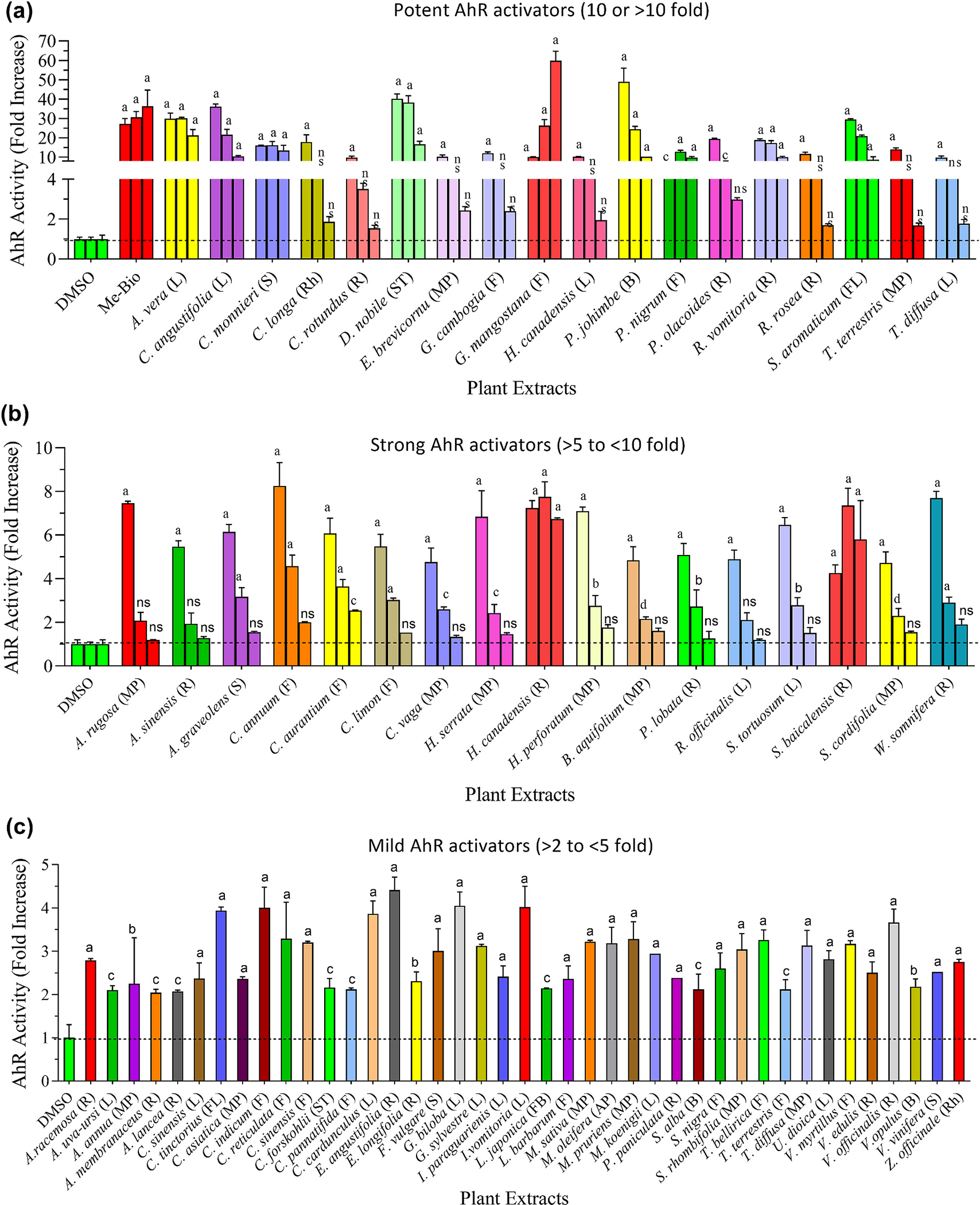Fig. 2.

Effects of various medicinal plant extracts on the activity of hAhR. AhR reporter cells were treated with different concentrations of extract (30, 10, and 3.33 μg/mL), positive control (Me-bio: 1000, 500, and 250 nM), or vehicle control (DMSO) for 24 h. Following incubation, luciferase activity was measured. Based upon fold increase in luciferase activity, tested plants were categorized as follows: (a) Potent activators (≥10-fold); (b) Strong activators (>5 – <10-fold); (c) Mild activators (>2 – <5-fold). Weak (<2-fold) or non-activators are presented in the supplementary data (Table S3). L, S, R and MP represent leaf, stem, root and mixed parts, respectively. Statistical significance is shown compared to DMSO control. ap < 0.0001; bp < 0.001; cp < 0.01, dp < 0.05 and ns = not significant. The abbreviations are representing as L = leaves, S = seed, R = root, F = fruit, ST = stem, B = bark, G = gum, FL = flower, FB = flower bud, SC = seed coat, Rh = rhizome, AP = aerial part, and MP = mixed part.
